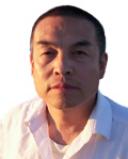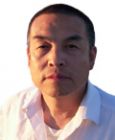Health
How to Use the Tao in Human Interaction to Understand Conflict and Peace (1)
How to use the Tao to understand conflict and peace
Posted December 3, 2009
I intend to use several posts to share with others the main ideas in my recent article on a Taoism-based cognitive model and its implications. I believe that the research provides a new perspective on understanding the issues of peace and conflict in both the mental and interpersonal domains.
You don't have to read the ancient texts as I Ching (The Book of Changes) and Tao Te Ching (Lao Tzu) to get exposed to Taoism. If you have learned some form of tai chi (chen style, yang style, wu style, etc), received TCM (traditional Chinese medicine) treatment, and/or read a book on Feng-Shui, you have had some experiences with Taoist philosophy, which permeates the applied health areas.
The problem is: although the Taoist insights have helped examine a range of psychological issues in the West, including Jungian psychology, psychotherapy, social psychology, and humanistic psychology, there are different interpretations about the Taoist awareness in the human domain.
Then the question is: What is the central idea of Taoist philosophy as applied to psychology?
I argue that it is the unity of opposites (the oneness of yin and yang). It is this principle that presents unique approach to understanding psychological activities and experiences. Specifically, this philosophical framework characterizes both the internal operation of social cognition and the nature of interaction between the fundamental yin and yang systems (the cognition and human reality), which produces psychological experiences in the human domain (e.g., conflict and peace).
Although the notion of the unity of opposites is valuable in understanding psychological issues, it has hardly been investigated in the previous research. This neglect is surprising, because as symbolized by the tai chi diagram, this Taoist principle epitomizes life's basic opposites (yin and yang) and the connection between the two interdependent components. I Ching (The Book of Changes), the earliest Taoist text, presents the concepts of yin and yang and their interactions by depicting two kinds of lines (divided and solid) in each of the 64 hexagrams, and the two trigrams that constitute each hexagram. It suggests that the inner (yin) and outer (yang) systems, their interplay, and their changes symbolize how we interact with self, others, and environments. As Jung commented, the essential Taoist idea in I Ching suggests that all of the ingredients make up the observed moment. Understanding human experiences involves recognizing a special interdependence of objective events among themselves, as well as with the subjective (psychic) states of the observer or observers.
According to Lao Tzu, "All things carry Yin and hold Yang, with the interacting energy to balance the relationship" (Chap. 42). Namely, the paradigm of the unity of opposites operates in both the natural world and human domain. It includes the oneness of feminine and masculine forces, internal and external, water and fire, night and day, passive and active, as well as receiving and approaching. It indicates that all apparently separate or opposite systems (e.g., self, others, nature) are part of the whole universe (Lao Tzu) and are governed by the same oneness or Tao that transcends the boundaries of all individual entities (e.g., self, others, and situations).
....to be continued in the next post.
These serials are based on:
Sun, K. (2009). Using Taoist principle of the unity of opposites to explain conflict and peace.
The Humanistic Psychologist, 37, 271-286.


